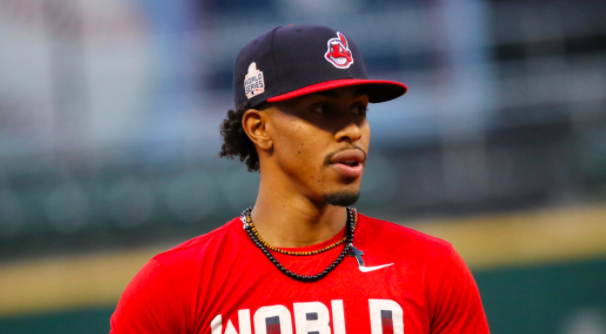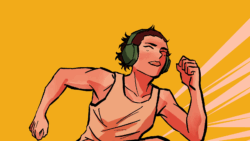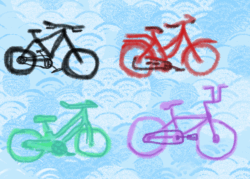On Monday, Major League Baseball announced that, in 2019, the Cleveland Indians will remove the controversial Chief Wahoo logo from their uniforms. The move, in the works for several decades, was finally pushed through after commissioner Rob Manfred urged Indians’ chief executive Paul Dolan to take action. In a statement, Manfred expressed relief after pushing for the move for over a year. “[The Indians organization] ultimately agreed with my position that the logo is no longer appropriate for on-field use in Major League Baseball, and I appreciate Mr. Dolan’s acknowledgment that removing it from the on-field uniform by the start of the 2019 season is the right course.”
Manfred is purporting this move as a major victory of his tenure as commissioner, but in reality, it is far from the watershed moment he makes it appear to be. For one, the Indians had already removed the logo from their caps in 2013. But furthermore, this is just another overdue decision in a broad, ongoing movement to remove offensive Native American symbolism in sports. In fact, the National Congress of American Indians reports that over 2000 “Indian” references have been removed from sports over the past 35 years. In 2005, the NCAA instituted a policy aimed at removing potentially harmful mascot names, and since then, six American universities have changed their name from “Indians,” while several others have made similar alterations. The truth is that the Cleveland Indians are not demonstrating any sort of newly found progressivism. On the contrary, the organization was well behind in terms of addressing its racist caricature and still has much more to do. Chief Wahoo’s removal should not take away from the fact that the Indians still have a team name that brings shame not only to Native Americans, but to fans everywhere who wish for their favorite pastime to be free of the ignorant rhetoric of past generations. The name must be changed.
Perhaps the reason that the logo has been a more heated point of contention is that a physical image can stir up a far more visceral reaction. The smiling, red-faced Native American, originally appearing on Indians uniforms in 1948, is certainly a disturbing image to those familiar with the history of racial stereotyping in America. The media is quick to condemn the use of displays like blackface, and the MLB was quick to come down hard on the Houston Astros’ Yulieski Gurriel for his gesture directed at Yu Darvish during the World Series, so maybe it is easier to get riled up about racism that we can physically see. The Chief Wahoo logo is extremely offensive and rife with misrepresentation. It comes from a time when similarly, less than flattering caricatures of African Americans were used to justify discriminatory laws and actions. It should be obvious that a smiling cartoon image of a brave (chiefs have full headdresses, braves have the one feather) with a flagrantly inaccurate and stereotypical skin color is problematic. So, it is great that the Indians have removed the logo (despite the fact that they will continue to profit off its sale in souvenir shops for fear of losing the trademark to private sellers), but the team name, with its disturbing origins and implications, must be next to go.
In 1914, Cleveland was searching for a new team name after star player Nap Lajoie, the namesake for the team’s previous name (the Cleveland Naps), decided to leave the club. The team’s owner assembled several Cleveland-area sportswriters to choose a new name and they settled on “Indians.” The supposed rationale for the name choice originates from a star player on the Cleveland Spiders (a different organization) who happened to be the first Native American in professional sports in the late 1890s. Louis Sockalexis is touted by modern supporters of the name as a legendary baseball player for the Spiders whom the Indians were simply honoring. This story is widely disputed. Many claim that, in reality, it has been spread as a tactic to distract from the true origins of the name as an effort to capitalize on the profit that accompanied the growing popularity of team names that mocked Native Americans at the time. Even if the story is accepted as truth, the name has troublesome roots in racism.
Ed Rice, Sockalexis’ 70 year old biographer, maintains that the Indians’ name owes at least partial inspiration to the renowned outfielder, but that it in no way was meant as an honorific gesture. Rice spoke with USA Today on Thursday about the social climate in America at the turn of the twentieth century, a time when the American Indian Wars were ongoing. “If you read the writing, it shows how racism was so acceptable in the American press in the 1890s,” he said. “It’s just horrible — suggesting [Sockalexis is] a savage, and he’ll be scalping people. They had an awful lot of fun with all the metaphors.”
Rice cites that the precise origin of the Indian name was a nickname for the Spiders while they were managed by Patsy Tebeau. “They called them ‘Tebeau’s Indians,” he said. “But it wasn’t meant to be flattering, of course. It was meant to make fun of the spectacle that Cleveland was going to be in 1897, putting an American Indian on the field. It wasn’t considered respectful.” Having originated at a time when Native Americans were marginalized to the point of being viewed as subhuman, the claim that the Cleveland Indians were faithfully honoring a Native American is dubious at best. Regardless of the organization’s insistence on a connection to Sockalexis, there is little evidence to demonstrate that it was a positive one. Far more likely is the notion that the name was derived from a desire to cash in on the ubiquitous and widely encouraged mockery of an ethnic group that had proven profitable in the past (Boston Braves). It is easy to imagine how awful it would be had the New York Mets decided to honor Jackie Robinson by naming their new team in 1962 the New York Negroes to pay homage to the first black athlete who played in the same town a decade prior. This may seem like an unfair comparison, but it is difficult to find legitimate flaws in the analogy other than the fact that the Indians were almost definitely NOT intending to truly honor Sockalexis.
There is enough evidence to show that the origin of the Indians’ name is rooted in some degree of racism, but even if it were not, the best case scenario still poses problems. If the Indians were sincerely honoring Native Americans, should it remain acceptable to use a marginalized ethnic group as a team name in modern society with its ever increasing sensitivity to racial issues? Team names are meant to be fun to root for and bring people together, so using racial language in them just doesn’t make sense. The use of ethnic groups that have been discriminated against in the past for something like a team name will always bring a touch of discomfort and controversy, even if meant with the best intentions.
In 1995, Washington Bullets owner Abe Pollin responded to rising street violence in Washington D.C. by changing the team’s name to the Wizards. He sensed something wrong with the team name and ignored cries of the importance of tradition to swiftly remove a potential source for controversy. There have been few if any complaints about the name change since then. One would think that centuries of racial conflict and mistreatment of Native Americans might be enough to prompt Dolan to take similar action, but the Indians’ owner is fixated, saying: “Not only are we adamant about keeping the name Indians, but the Commissioner is similarly supportive of the name. Yes, some people will continue to make noise about that, but I’m not troubled by its use.” Unfortunately, it seems the Cleveland Indians will remain attached to their ugly roots.






[…] For one, the Indians had already removed the logo from their caps in 2013. But furthermore, this is just another overdue decision in a broad, ongoing movement to remove offensive Native American symbolism in sports. In fact, the National Congress of American Indians reports that over 2000 “Indian” … Read more here […]